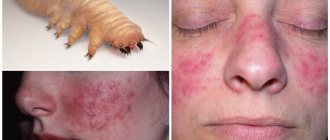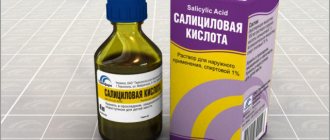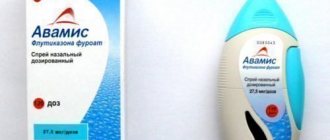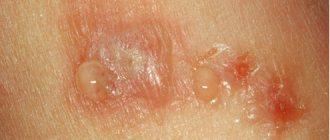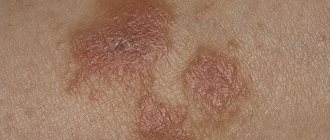Furuncle is an acute purulent-necrotic inflammation of the hair follicle and sebaceous gland, occasionally affecting nearby tissue. Boils can be located anywhere there are hair follicles (that is, excluding the palmar and plantar areas), but the most common locations are the back, buttocks, face, neck, and forearms. Furunculosis is the occurrence of multiple boils in any area of the body. Blood transfusion for furunculosis is often the only effective treatment method.
Treatment of furunculosis
Blood transfusion in medicine has been known for a long time. Transfusion for furunculosis eliminates the pathogen and strengthens the body's immune forces. In medicine, the process of blood transfusion is usually called blood transfusion. Blood from a vein is injected in its pure form into the muscle area. The biological material does not require any additional processing. It is impossible to get rid of boils with traditional treatment, since ointments and gels eliminate only local symptoms (itching, pain, redness), but not the pathogen itself.
Blood transfusion has long been used in medicine and is effective for treating a number of diseases, including furunculosis
During treatment, it is necessary to find out what caused the development of the disease. Without eliminating it completely, it will not be possible to recover. Before blood transfusion, it is necessary to undergo a complete diagnosis of the body and exclude possible ailments.
Causes and mechanism of development
Furunculosis is an inflammation of the hair follicle with the formation of a purulent core, accompanied by the spread of infection to the surrounding connective tissue of the middle layer of the skin. The causative agent of the disease is Staphylococcus aureus, less commonly the cause of infection is Staphylococcus epidermidis.
These microorganisms are common in the environment: street dust, industrial premises, clothing, living rooms. They quite often live on the surface of human skin and the mucous membrane of the nasopharynx without causing any diseases. According to some reports, up to 75% of people are carriers of staphylococci.
Is it possible to become infected with furunculosis from another person? Transmission of staphylococcus itself is possible, but for the development of the disease, the presence of exogenous and endogenous factors is necessary, which we will discuss below.
Staphylococci are most often found in the mouths of hair follicles, where hair exits the skin, as well as in the excretory ducts of the sebaceous glands. Up to 90% of these microbes are non-pathogenic strains. Under certain conditions, non-dangerous forms of this bacterium can become pathogenic (disease-causing).
A furuncle can occur both on healthy skin and on skin affected by other forms of staphyloderma when the process spreads to the hair follicle. Like any infectious disease, furunculosis occurs as a result of the interaction of a pathogen and a macroorganism. For its development, not only a source (staphylococcus), but also internal (endogenous) predisposing factors, as well as certain environmental conditions (exogenous factors) are required.
Exogenous factors contributing to the development of furunculosis:
- minor injuries caused by solid particles of coal or metal suspended in the air in production, creating an entry gate for bacteria;
- friction of clothing on the lower back, neck, buttocks, which contributes to the transition of saprophytic (safe for humans) forms into pathogenic ones and their penetration deep into the skin;
- scratching the skin of patients with other pathologies - eczema, neurodermatitis, scabies.
Endogenous factors that increase the risk of developing furunculosis:
- exhaustion of the body and hypovitaminosis;
- diseases of the endocrine glands (diabetes mellitus, obesity), anemia, intestinal diseases, nervous system diseases;
- alcoholism;
- hypothermia or overheating of the body, especially repeated.
Endogenous factors cause a decrease in the body's reactivity, in particular, inhibition of local immune reactions. The pathogen penetrates the skin through damage caused by external factors. There it finds itself in a favorable environment and begins to actively multiply, causing inflammation.
Among the many substances secreted by this microbe, coagulase is of particular importance. Under the influence of this enzyme, coagulation (clotting) of blood plasma and blockade of surrounding lymphatic vessels occurs. This leads to the limitation of infection with the formation of infiltrates with the subsequent formation of purulent-necrotic rods. Staphylococcus aureus also secretes hyaluronidase, which dissolves the base of connective tissue and promotes the penetration of microorganisms into the deep layers of the skin. Thus, staphylococcal infection is characterized by spread not laterally, but in depth.
Furunculosis most often appears in autumn and spring. Mostly men suffer from it. The disease affects women and children less frequently. This is explained by the fact that the causes of furunculosis are much more often observed in adult men.
There is an opinion that many diseases are based on psychological causes. The psychosomatics of furunculosis is based on the assertion that emotions such as anger and constant irritation are favorable for its appearance. It can be assumed that negative emotions cause a prolonged release of stress hormones and subsequent exhaustion of the adrenal glands, which, in turn, leads to suppression of the immune system and the development of chronic furunculosis.
There are single boils, recurrent boils that appear after some time, and furunculosis, in which pustules appear continuously one after another.
Benefits of therapy
Blood transfusion helps to get rid of not only the infection, but also many other concomitant diseases. It cleanses the blood, eliminates congestion and removes toxins that have accumulated in the plasma for years. As a result, the functioning of the liver, gastrointestinal tract and cardiovascular system is normalized. Quality indicators in the blood improve, more red cells are produced, which are responsible for the body's defenses. In humans after blood transfusion:
- well-being improves;
- accelerates the healing of wounds and minor scratches;
- metabolism is normalized;
- itching and pain go away;
- old boils dry out, and new ones stop appearing;
- acne, acne and other minor skin defects go away;
- the skin becomes clean and acquires a healthy tone.
After the transfusion, the weakened body begins to quickly react to any foreign microorganisms and reject them, stopping foci of inflammation. If the therapy gives a poor result or does not help at all, antibiotic therapy is carried out, and the blood transfusion is repeated after a few months.
Blood transfusion for the treatment of boils allows you to strengthen the immune system and get rid of boils, as well as acne and pimples
Chatterbox with sulfur
Homemade mash with sulfur is a very effective remedy for various types of acne, including boils.
All the components for its preparation can be easily purchased at the nearest pharmacy for very little money.
To prepare the mash you will need:
- boric acid (2% solution);
- ethanol;
- chloramphenicol;
- aspirin;
- sulfur powder.
To prepare the composition, you should take 2.5 parts of sulfur and aspirin, 2 parts of chloramphenicol and 1 part of ethyl alcohol and boric acid. Place all components in a dark glass container and mix thoroughly. Apply to problem areas 1-2 times a day. You can also use alternative recipes for making acne mash.
It is not recommended to use a sulfur powder before going outside, as a slight yellow discoloration may appear on the skin.
Technique
How is a blood transfusion done for furunculosis? The procedure is simple. It is carried out in stages, increasing the amount of blood withdrawn. At the initial stage, 1–2 mg of material is taken from a vein and injected into the buttock. The next day the dose is increased to 2 mg, and so on. An increase of 1 mg is carried out over 10 days, after which they begin to decrease. Therapy takes 15 days. The procedure is not painful.
After the first injection, patients may observe some lumps under the skin; this is considered normal, taking into account the fact that blood is a rather dense substance and does not absorb well. These lumps can cause discomfort. To get rid of them, doctors recommend massaging the lumps. The faster they resolve, the sooner the discomfort will go away. To reduce the pain from a lump, you can use:
- heating pad;
- compresses with alcohol;
- iodine network.
After 5 sessions, the body adapts and the discomfort goes away. The result of blood transfusion will not be noticeable immediately, but only after two weeks, when the course is completely completed.
Recently, transfusions with ozone enrichment have been used. The patient's blood removed from the vein is saturated with ozone. It becomes more active in the fight against viruses and bacteria. This method allows you to increase immunity and achieve results in the treatment of boils much faster.
The blood transfusion procedure, which is used to treat boils, is technically quite simple and, with minimal skills, can be performed at home
Self-medication is contraindicated for boils during pregnancy
The process of their formation is no different from the standard course of the disease, but it is necessary to take into account the fact that the body is undergoing a strong reconfiguration during this period.
Effective, quick treatment should protect the woman and child from complications and problems.
A boil occurs as a result of inflammation of the hair follicle, the process is accompanied by the formation of pus and intoxication of the body.
There are several types of boils; a large abscess is called a carbuncle. Most often these are two boils located nearby, they are located deep under the skin, resulting in inflammation and painful swelling.
Carbuncles are more dangerous than boils, since the leaked pus can enter the circulatory system.
Localized furunculosis is accompanied by the formation of a large number of ulcers in a small area of skin, in some cases they can be quite large in size.
Acute furunculosis is accompanied by the simultaneous appearance of boils, in some cases the process can take 1-2 days.
There are three main stages of disease development:
- Bright red infiltration around the hair follicle, the process is accompanied by an increase and thickening of the infiltrate in size, increased pain, swelling of the surrounding tissues, and tingling sensations are observed.
The stage of suppuration and necrosis begins on the 3-4th day from the beginning of its formation, during this period a typical purulent-necrotic core is formed, emerging to the surface in the form of a pustule.
The process is accompanied by an increase in temperature to 38 degrees and pronounced pain in the boil area.
At the peak, the cover of the boil is opened, pus and necrotic core come out through the hole, the symptoms of intoxication are reduced.
The healing stage is accompanied by the formation of granulation tissue in the crater that remains after opening the abscess.
Furuncle - “Live Healthy!” program
The main symptom is the appearance of an abscess, which goes through three stages in its development, the whole process takes about ten days.
The second stage of the disease is accompanied by signs of intoxication: loss of appetite, headache, weakness, and malaise.
Sometimes the formation of a boil is characterized by an erased picture, a necrotic core is not formed.
As a result of the furuncle blocking the ear canal, hearing loss occurs.
Is it possible to carry out blood transfusion on your own?
Many patients, not wanting to be in a dermatovenous dispensary hospital, ask whether such treatment is possible at home. The answer will be yes. The main task during blood transfusion is to correctly take biological material from a vein and inject it into the buttock as quickly as possible. If you can cope with this yourself or you have medical staff at home, then treatment can take place at home.
Gloves and syringes must be disposable. It is necessary to monitor the time of withdrawal and quantity. If you are not sure that you can handle it on your own or cannot ensure complete sterility, it is better to contact the clinic. Animal hair, dust and some other everyday problems can negatively affect the procedure itself and cause complications or exacerbation of furunculosis.
Contraindications to the procedure
Blood transfusion for furunculosis has no contraindications. It may not give results if the disease is advanced and there are concomitant diseases. However, it won't do any harm. The downside of a transfusion may be the pain felt by hypersensitive people. If a person has a low pain threshold, then he will have to endure stress twice - during the puncture of the vein to remove the material and when the gluteal muscle is punctured for blood infusion. The procedure gives results in 85% of cases, so you still have to be patient.
If there are oncological diseases in the body or during pregnancy, the appropriateness of therapy is determined by the doctor on an individual basis.
Transfusion is rarely an independent procedure in the treatment of boils. The complex prescribes local medications that relieve suppuration and prevent the development of bacterial infection in the wound. During treatment of furunculosis, it is necessary to limit or completely eliminate water treatments. A humid and warm environment creates favorable conditions for the growth of bacteria, so even a properly performed transfusion at home will not give any result. As a hygienic procedure, the skin is wiped with non-aggressive antiseptics. To enhance the result, electrophoresis with antimicrobial agents is prescribed, and the boil is opened, followed by drainage of the wound.
Treatment of boils is a long and grueling process; it is much better to avoid the disease altogether. Timely treatment of minor cuts and burns, regular hygiene procedures and a healthy lifestyle will help with this.
Treating boils is as easy as shelling pears January 1, 2006 1223,
Are you tormented by persistent boils? Do doctors recommend surgery or blood transfusion? Forget about it! Understand the reason for their occurrence, take action and forget about boils once and for all.
The first time I encountered this problem was twelve years ago during my service. A friend of mine, whose work involved mud and fuels and lubricants, developed a boil in his shin area. The case ended with an operation - the doctors saw no other way out but to cut out the rod.
